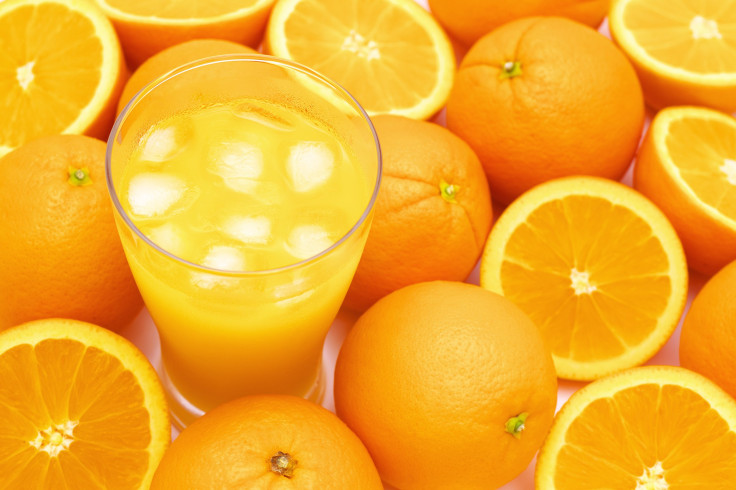The Truth About Orange Juice: Concentrate, Not-From-Concentrate Juices Only 'Minimally' Better Than Soda

How natural and “real” is the orange juice that lines the fridges and shelves in grocery stores? If they’re not-from-concentrate juices, like Coca-Cola’s Minute Maid and Simply Orange brands — or PepsiCo’s Tropicana — they’re probably concoctions defined by data algorithms and juice pipelines.
Of course, that doesn’t necessarily mean not-from-concentrate juice is unhealthy, per se. But Harvard research done in the past year has pointed out that drinking juice — even the so-called pure and all natural stuff — isn’t much better than soft or sweetened drinks.
While some people may turn to cold orange juice as a healthy way to start their day, the Harvard researchers suggest that simply eating fruits instead is a much better substitute. “Our data further endorse current recommendations on increasing whole fruits, but not fruit juice, as a measure for diabetes prevention,” Isao Muraki, lead author and research fellow in the Department of Nutrition at Harvard School of Public Health, said in a press release.
Of course, juice producers advertise most juice and especially 100 percent juice as nutritious and filled with vitamins. This may be true, but the amount of sugar being consumed could be more risky than beneficial in the long run.
“All of these beverages are largely the same,” Dr. David Ludwig, a pediatric obesity expert at Children’s Hospital Boston, told CBS News. “Juice is only minimally better than soda.”
Coke’s Process Of Pasteurization
A Bloomberg Businessweek report describes a secret “Black Book” algorithm used by Coca-Cola to process its orange juice. The writer, Duane Stanford, refers to it as a “sophisticated industrial juice complex.”
“You take Mother Nature and standardize it,” Jim Horrisberger, director of procurement at Coke’s Auburndale, Fla., juice packaging plant, told Bloomberg. “Mother Nature doesn’t like to be standardized.”
An illustrated diagram on Bloomberg shows how Coca-Cola produces its orange juice. First, hundreds of growers in Florida and Brazil raise oranges in fields. Coke keeps track of fruit-picking through satellite imaging of orange tree groves, then algorithms control acidity levels and pulp content. The juice is then processed and pasteurized, and stored in 2 million-gallon tanks for eight months or so. Finally, blend technicians mix the juice to ensure uniform taste, and the juices are bottled then sent to supermarkets.
Coke spent $114 million in the past several years to expand its largest U.S. juice bottling plant in Auburndale, and it uses its Black Book methodology to ensure that it can produce consistent-tasting orange juice for 12 months straight, even though peak season for oranges lasts about three months. For Coke, orange juice “is definitely one of the most complex applications of business analytics,” Bob Cross, who created Coke’s juice model, told Bloomberg. “It requires analyzing up to 1 quintillion decision variables to consistently deliver the optimal blend, despite the whims of Mother Nature.”
Oftentimes, during processing, natural components and water are removed from the juice and separated, only to be placed back in after pasteurization.
Indeed, a perfected process like Coke’s Black Book is fascinating and successful. But ultimately, at the end of the day, consumers should be aware that bottled orange juice — and any other fruit juice — is still really no substitute for water or whole fruit.
“With the possible exception of milk, children do not need any calorie containing beverages,” Ludwig told CBS News. “What is needed to replace fluid loss and satisfy thirst is the same beverage we’ve been drinking for millions of years, and that’s water.”



























